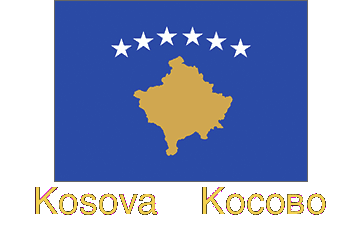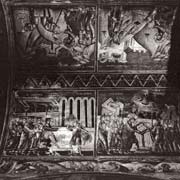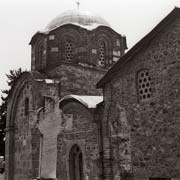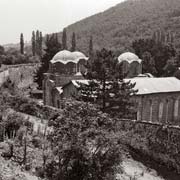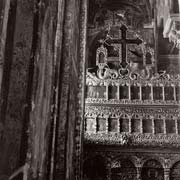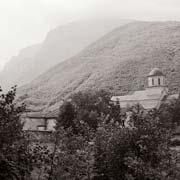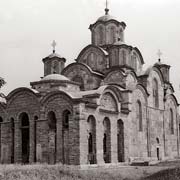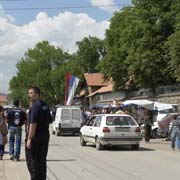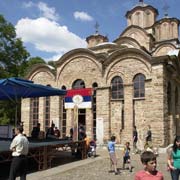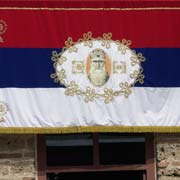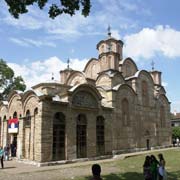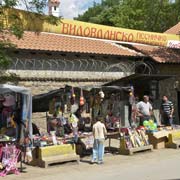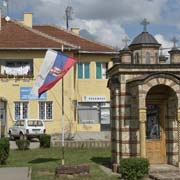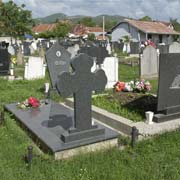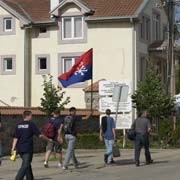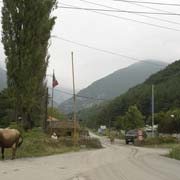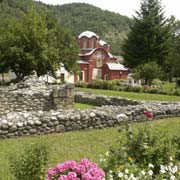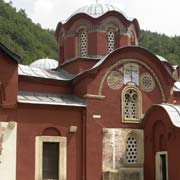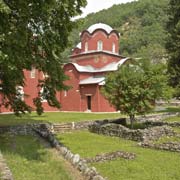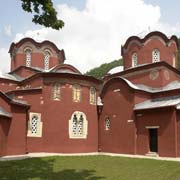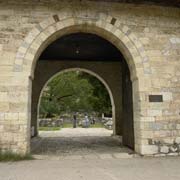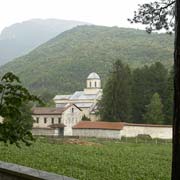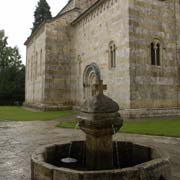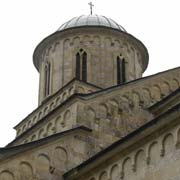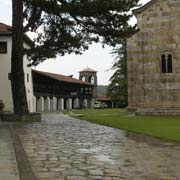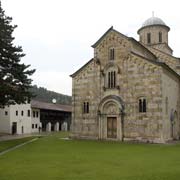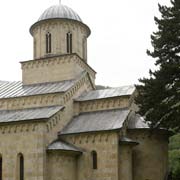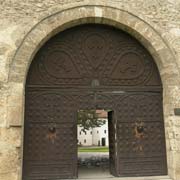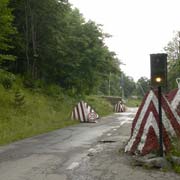Photos of The Serbian Monasteries, Kosovo
The Serbian Monasteries
Although Serbian nationalists claim that Kosovo is “the heart of Serbia”, it was only in the early 13th Century they conquered this territory from their power base elsewhere in the Balkans, where they had lived from the 7th Century. During their rule of about 250 years, that came to an end with the final Ottoman takeover in the mid-15th Century, they had built churches and monasteries; these remain sacred ground for adherents of the Serbian Orthodox Church. The three monasteries Visoki Dečani, Manastir Gračanica and Pećka Patriaršija (Patriarchate of Peć) have been declared World Heritage Sites by UNESCO and were protected by KFOR troops in 2009.
you may then send it as a postcard if you wish.
Visoki Dečani (Serbian Cyrillic: Високи Дечани) is a major Serb Orthodox Christian monastery located in Deçani, 12 kilometres south of the town of Peja (Peć), settled in the picturesque valley of the Bistrica (Lumbardhi) river surrounded by the mountains and forests of the Prokletije (Alpet Shqiptare) mountain range. It is the largest medieval church in the Balkans, containing the most extensive preserved fresco decorations. King Stefan Uroš III Dečanski established the monastery in 1327. The king died in 1331, and was buried in a carved wooden sarcophagus at the monastery, which became his famous shrine. The construction was continued by his son Emperor Stefan Uroš IV Dušan until 1335, but the wall paintings were not completed until 1350. The church is distinguished by its imposing size and Romanesque and Early Gothic structure and design. Today a young brotherhood of 30 brethren lives in the monastery, continuing the centuries-old traditions of the past. UNESCO listed the monastery as a World Heritage site in 2004. Its frescoes are considered “one of the most valued examples of the so-called Palaeologan renaissance in Byzantine painting” and “a valuable record of life in the 14th Century”. Because of the danger of attacks by ethnic-Albanian partisans, it was added to the List of World Heritage Sites in Danger in 2006.
Manastir Gračanica (Serbian Cyrillic: Манастир Грачаница), a Serbian Orthodox monastery, was founded by the Serbian king Stefan Uroš II Milutin in 1321. The Monastery church was constructed on the ruins of an older 13th-century church, the Church of the Holy Virgin, which was itself built on the ruins of a 6th Century early Christian three-naved basilica. During Ottoman rule Gračanica became an important cultural centre. It suffered severe damage during the 14th Century, when Kosovo was overrun by the Ottoman Empire, including at the time of the Battle of Kosovo in 1389, that took place very close to there. It again suffered damage late 17th Century as a result of the war between the Habsburg and the Ottoman Empires, in which the Serbs took part on the Christian side. Turks removed the leaden cross and pulled out the floor tiles, together with the treasure hidden in the church by Patriarch Arsenije III. After the Second World War, nuns renewed the monastery, and it has served as a convent ever since. Today 24 sisters in the monastery are active in icon painting, agriculture, sewing, and other monastic obediences. Of the former monastic compound, only the church has survived, and it represents the pinnacle of Serbian medieval building in the Byzantine tradition. After the Kosovo war of 1999, the Bishop of Raška and Prizren, Artemije, transferred his official seat from Prizren to Gračanica. Since then it has become not only the most important spiritual but also the national and political centre of the remaining Kosovo Serbs who live south of Mitrovica. The village of Gračanica is now a Serbian enclave of around 11,000 people, with nationalist Serbian symbols and flags and tough-looking youths wearing T-shirts with Serbian logos and slogans. In 2009 there was razor-wire on top of the monastery walls with KFOR military guarding against possible Albanian revenge attacks. On 13 July 2006 Gračanica was placed on UNESCO's World Heritage List under the name of Medieval Monuments in Kosovo as an extension of the Visoki Dečani site.
Pećka Patriaršija (Serbian Cyrillic: Пећка Патријаршија), the Patriarchate of Peć, is a Serbian Orthodox monastery located near Peć (Peja). It is a complex of four fresco-decorated churches, a library, and a treasury, the spiritual seat and mausoleum of the Serbian archbishops and patriarchs. The Patriarchate was founded around the 13th Century. Its founder is probably Saint Sava, who died in 1235. The land here became a “metoh” (estate owned and governed by a monastery) of Žiča monastery, which was then the seat of the Serbian Archbishopric. Archbishop Arsenije I (who died in 1266) then built the Church of the Holy Apostles here. Three more churches were built in subsequent years: the Church of Saint Demetrius around 1320 and the Church of the Holy Virgin Hodegetria around 1330. The small Church of Saint Nicholas was added just to the south of it. The Archbishopric at Peć was raised to Patriarchal status by Emperor Dušan the Mighty, who ruled from 1331 to 1355. From the 13th to the 15th Century, and in the 17th Century, Serbian Patriarchs and Archbishops of Peć were buried in the churches here. The Ottomans abolished the Patriarchate in 1766. After the demise of the Ottoman Empire, it became the Patriarchate of Serbia again. After the Second World War the Patriarchate of Peć was converted into a convent. Today the monastery is still one of the most important Serbian Orthodox centres in Kosovo, with a sisterhood of 24 nuns. The town and its surrounding area is sacred ground for adherents of the Serbian Orthodox Church. On 13 July 2006, it was also placed on UNESCO’s World Heritage List as an extension of the Visoki Dečani site.


